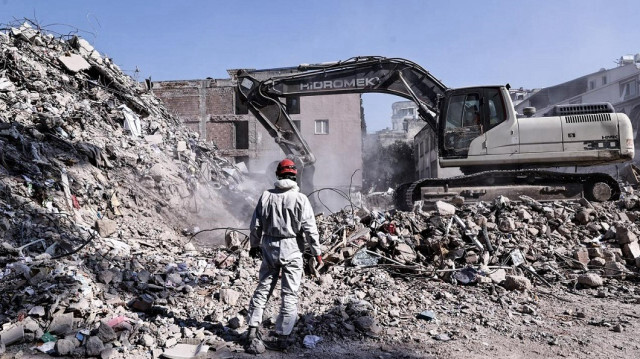Facilities are designed to process estimated 200 million tons (100 million cubic meters in volume) of debris collected in 86 temporary storage sites, says UNDP
15/08/2024 Thursday
AA

File photo
The UN Development Fund (UNDP) has announced the completion of two model facilities for the safe processing and recycling of earthquake debris in Türkiye.
The facilities, located in Hatay and Kahramanmaras provinces, are designed to process an estimated 200 million tons (100 million cubic meters in volume) of debris collected in 86 temporary storage sites located in the region, according to a UNDP statement.
The facilities are part of a $4.83 million project funded by Japan, it added.
Equipped with industrial-scale crushers, magnetic separators and belt conveyors, the new facilities will process debris in stages, first removing hazardous waste, then separating out recyclables such as metal, textiles, plastics, glass and wood, the statement said.
“Proper management of earthquake debris is a precondition for the recovery of the affected region,” UNDP Resident Representative Louisa Vinton said. “The facilities we have been able to build with Japan's generous support will help to reduce the burden on the environment and eliminate risks to human health.”
A comprehensive debris management strategy and implementation plan was prepared by the UNDP and the Turkish Environment, Urbanization and Climate Change Ministry, drawing on Japanese expertise and technology.
“This project was designed to prevent health hazards by disposing of the rubble in Hatay and Kahramanmaras, while also strengthening social infrastructure that would support the Turkish economy,” Japanese Ambassador to Ankara Takahiko Katsumata said.
“This project is coming to an end, but Japan will continue to provide support for recovery in the field of disaster waste disposal, as part of our broader assistance," he added.
“The two facilities are currently in an advanced stage of testing and are expected to reach a processing capacity of 100 tons per hour in the coming months. If replicated widely, this approach to earthquake debris could massively shrink the size of regional landfills and also reduce carbon emissions by providing ready substitutes for construction materials that otherwise would have to be excavated or manufactured,” according to the UNDP statement.
Fatih Turan, the general director of Türkiye's Environmental Management Directorate, said: “This project represents a major milestone in our ongoing efforts to restore normalcy and support sustainable reconstruction in the earthquake-affected regions.”
“We thank Japan and UNDP for their vital contribution to environmentally safe management of debris and advancing our environmental goals,” Turan added.
More than 50,000 people were killed and over 107,200 injured in two powerful earthquakes that rocked southern Türkiye on Feb 6 2023, according to official figures.
The 7.7 and 7.6 magnitude earthquakes affected more than 13 million people across 11 provinces, including Kahramanmaras, Adana, Adiyaman, Diyarbakir, Gaziantep, Hatay, Kilis, Malatya, Osmaniye, Elazig, and Sanliurfa.
No comments:
Post a Comment